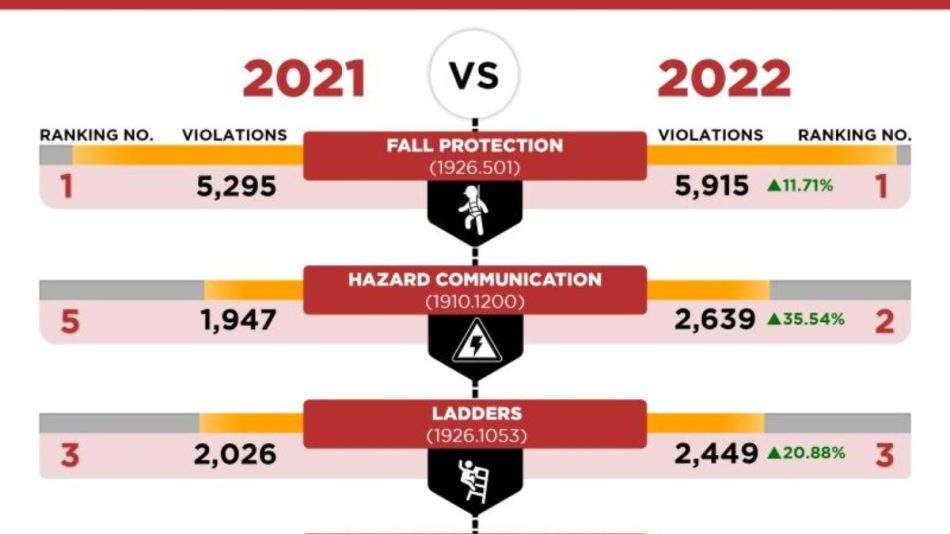Over 2 million deaths at work
More than 2 million work-related deaths occur each year
Work-related illnesses and injuries caused the deaths of 1,9 million people in 2016, according to the first joint estimates from the World Health Organization (WHO) and the International Labor Organization (ILO).
According to the joint WHO-ILO estimates on the burden of work-related disease and injury, 2000-2016: global monitoring report, most work-related deaths were due to respiratory and cardiovascular diseases.
Non-communicable diseases accounted for 81% of deaths. The leading causes of death were chronic obstructive pulmonary disease (450,000 deaths); cerebral stroke (400,000 deaths); and ischemic heart disease (350,000 deaths). Occupational injuries caused 19% of the deaths (360,000 deaths).
The study takes into account 19 occupational risk factors, such as exposure to long working hours and workplace exposure to air pollution, asthmagens, carcinogens, ergonomic hazards and noise. The main risk was exposure to long working hours, which was linked to some 750,000 deaths. Workplace exposure to air pollution (particulate matter, gases and fumes) caused 450,000 deaths.
“It is shocking to see so many people literally dying because of their work”, said Dr. Tedros Adhanom Ghebreyesus, WHO Director-General. “Our report is a wake-up call to countries and companies to improve and protect the health and safety of workers by fulfilling their commitments to provide universal health and safety coverage”.
The report warns that work-related illnesses and injuries overburden health systems, reduce productivity, and can have a catastrophic impact on household incomes.
Globally, work-related deaths per population decreased by 14% between 2000 and 2016. According to the report, this may be due to the introduction of improvements in workplace health and safety. However, deaths from heart disease and stroke associated with exposure to long working hours increased by 41% and 19% respectively. This reflects an increasing trend for this relatively new occupational and psychosocial risk factor.
This first joint WHO/ILO global monitoring report will enable policy makers to track work-related health losses at national, regional and global levels. This will enable more focused scoping, planning, costing, implementation and evaluation of appropriate interventions to improve working population health and health equity. The report shows that more action is needed to ensure healthier, safer, more resilient and socially just workplaces, with workplace health promotion and occupational health services playing a key role.



Each risk factor has a unique set of preventive actions, which are described in the follow-up report to guide governments, in consultation with employers and workers. For example, preventing exposure to long working hours requires agreement on maximum healthy working time limits. To reduce exposure to air pollution in the workplace, dust control, ventilation and personal protective equipment are recommended.
“These estimates provide important information on the burden of work-related disease, and this information can help shape policies and practices to create healthier and safer workplaces”, said Guy Ryder, ILO Director-General. “Governments, employers and workers can take steps to reduce exposure to risk factors in the workplace. Risk factors can also be reduced or eliminated through changes in work patterns and systems. As a last resort, personal protective equipment can also help protect workers whose jobs do not allow them to avoid exposure”.
“These nearly two million premature deaths are preventable. Action based on available research is needed to address the evolving nature of work-related health threats”, said Dra. Maria Neira, Director of WHO’s Department of Environment, Climate Change and Health. “Ensuring the health and safety of workers is a shared responsibility of the health and labor sector, as is leaving no worker behind in this regard. In the spirit of the UN Sustainable Development Goals, the health and labor sectors must act together, hand in hand, to ensure the elimination of this major burden of disease”.
“International labour standards and WHO and ILO tools and guidelines provide a solid basis for putting in place strong, effective and sustainable occupational safety and health systems at different levels. Their implementation should help to significantly reduce these deaths and disabilities”, said Vera Paquete-Perdigao, Director of the ILO’s Governance and Tripartism Department.
A disproportionately high number of work-related deaths occur among workers in South Asia and the Western Pacific, as well as among men and people over the age of 54.
The report notes that the total burden of work-related disease is likely to be much higher, as health losses from a number of other occupational risk factors will need to be quantified in the future. In addition, the effects of the COVID-19 pandemic will add another dimension to this burden that will need to be reflected in future estimates.
In May 2021, WHO and ILO published the first study quantifying the burden of heart disease and stroke attributable to exposure to long working hours (750,000 deaths). This study established that long working hours are the risk factor associated with the greatest burden of work-related disease.
Today, with the publication of the global monitoring report, WHO and ILO are launching their global comparative risk assessment of work-related disease burden. This assessment covers 19 occupational risk factors. It is WHO’s most comprehensive study of work-related disease burden and the first such assessment conducted jointly with the ILO. A visualization of the burden of disease at the country level, with gender and age breakdowns, is available online.
Comments
We are interested in your opinion, please leave us a comment